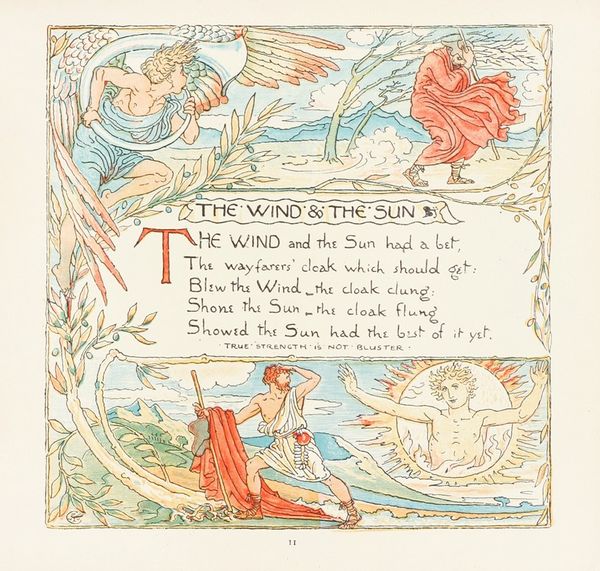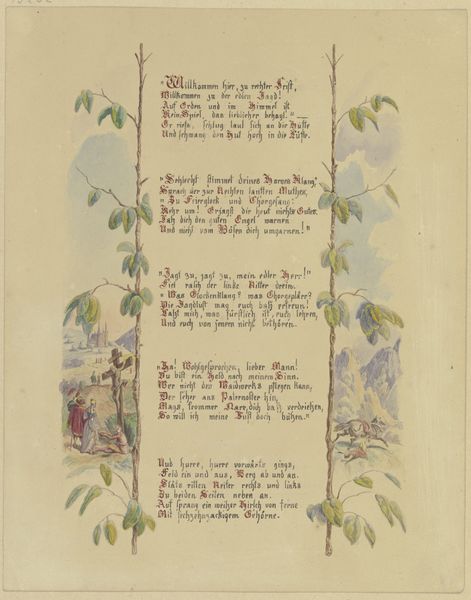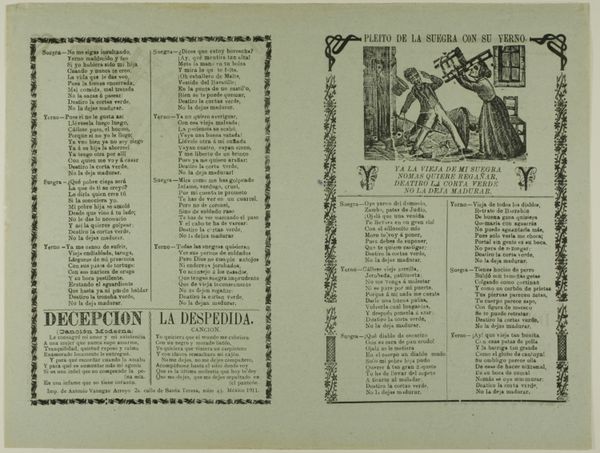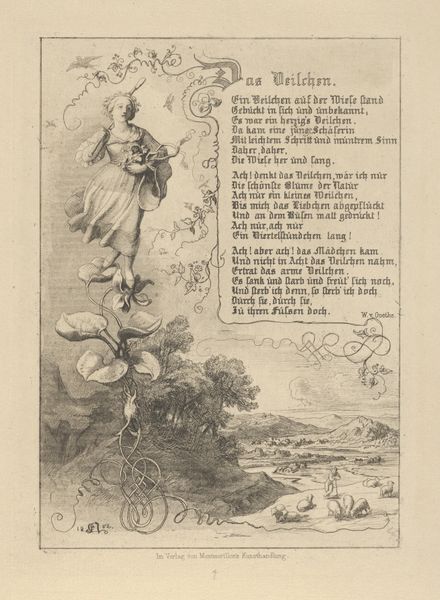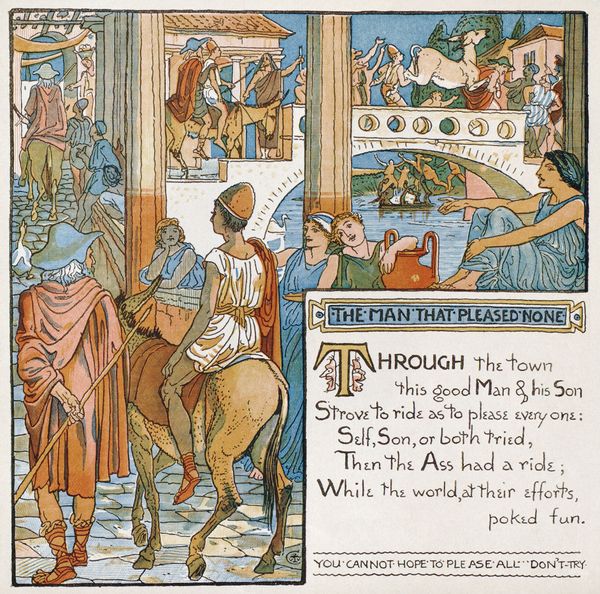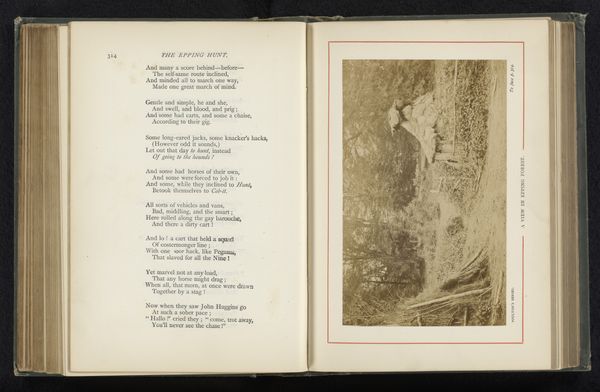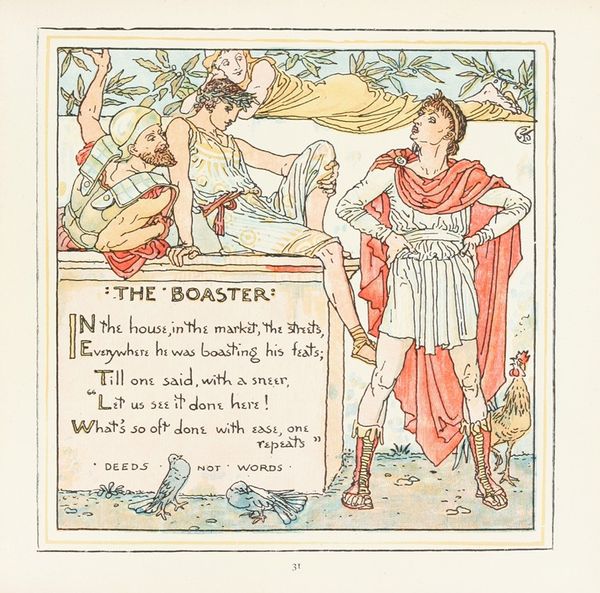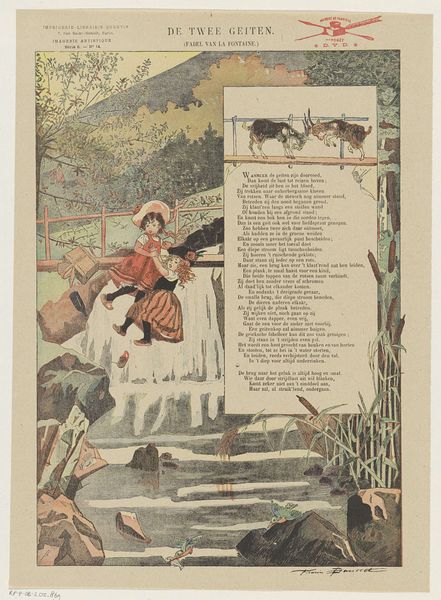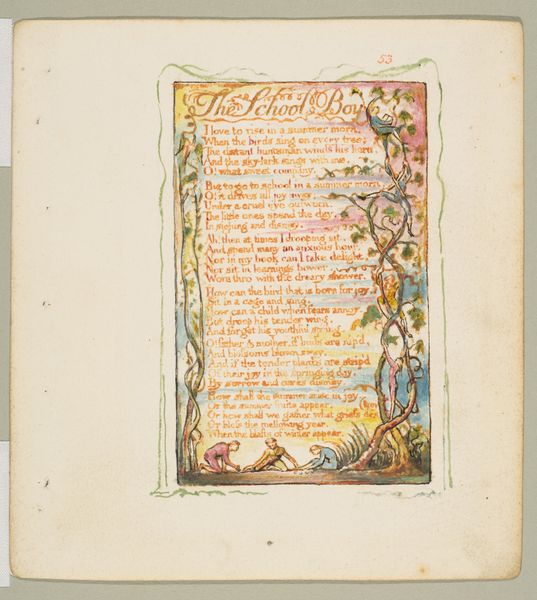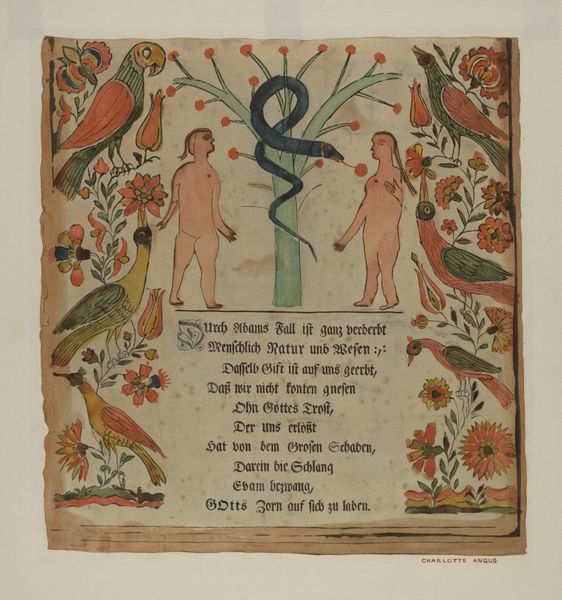
drawing, paper, ink
#
drawing
#
narrative-art
#
pen illustration
#
arts-&-crafts-movement
#
paper
#
text
#
ink line art
#
ink
#
academic-art
Copyright: Public domain
Curator: Let’s turn our attention to this intriguing ink and pen drawing from 1887 by Walter Crane, titled "The Baby's Own Aesop." It functions as a kind of illustrated table of contents. Editor: The image instantly feels comforting, like a nursery rhyme visualized. The presence of the classical figure holding a baby, framed by stylized vines and lettering, strikes a note of timeless wisdom. It seems intended to visually signal enduring values and lessons to a young audience. Curator: Crane was a key figure in the Arts and Crafts movement, which deeply influenced his commitment to making art accessible and educational. Here, we see the integration of design, literature, and moral instruction so emblematic of the period's reformist impulses, particularly for the burgeoning middle class. He was keen on making quality artwork affordable. Editor: Absolutely. The figure echoes both classical and pre-Raphaelite artistic language, but transformed to function didactically. It speaks to a deeply held Victorian faith in education. Even something as seemingly simple as the arrangement of these vignettes creates an emotional link to shared ancestral narratives. Motherhood representing all wisdom and knowledge to be offered to new generations of humanity and their progress. Curator: Note how the tales listed—"The Fox and the Grapes," "The Wolf and the Lamb," among others—form a curated compendium of fables teaching moral precepts. This was, in part, a reaction against what some perceived as the corrupting influences of industrialization. Editor: Crane seems to be visualizing archetypes through Aesop. The baby nestled in the arm of what feels like an allegorical figure could almost be seen as innocence held by wisdom. They exist on the verge of embarking on a long journey, which they must eventually tread. This artistic choice resonates profoundly, suggesting the inheritance of cultural and moral memory across generations. Curator: His use of linear design is fascinating, a synthesis of aestheticism and social purpose that elevates this piece beyond mere illustration. "The Baby's Own Aesop" served not only as entertainment, but also as an accessible point of entry into both artistic expression and ethical cultivation during this transformative era. Editor: It’s thought-provoking to see these perennial truths packaged for infant consumption. One can only imagine how these illustrations served to shape the moral imagination of young minds in Victorian Britain. Curator: It is clear that Crane's artwork remains as fascinating today as it did back then! Editor: It certainly allows you to explore this work as both a reflection on our origins and the stories we tell.
Comments
No comments
Be the first to comment and join the conversation on the ultimate creative platform.
